Poly Tube Down Air Mattress (DAM) First Generation
Poly Tube Down Air Mattress (DAM) First Generation Posted 07/25/2008 11:54:10 MDT by Bill Fornshell (bfornshell)
To anyone interested in the Poly Tube Down Air Mattress (DAM).
A few points about the first generation Poly Tube DAM. My MYOG - Down Air Mattress (DAM) Standard was my Warmlite DAM. This is an excellent product and I wanted to see if I could make a DAM that would be lighter than my Warmlite DAM but as easy to use. I was not yet into SUL and was looking for a weight savings of at least 50%. My second goal was to be able to use the Down in a multi purpose way.
1. I started working on the first generation Poly Tube Down Air Mattress (DAM) a long time ago (2004) and used silk for some things at that time. This was before I was using Pertex Quantum and I think before Momentum 90 was available. I did a few simple test of my materials and thought silk compressed smaller than the other materials. I didn't have the materials to pick from in the early part of 2004 like we now can buy easy.
2. The Poly Tube DAM was a design as part of a sleeping system to go into a hammock for "0" degree F, Hammock hanging.
3. I used the silk tubes of Down inside the Poly Tubing (2 mil) then blew up the Tubing. ( Side note: I got some 3 mil Poly Tubing to also try but never used it) I had a modified and very light weight Balloon pump to use so I didn't get moisture from my mouth in the Down. The amount of Down I used in each silk tube was to get me to "0" degrees "F". My plan was for other Down silk tubes for temps above "0" degrees F so I could use the same shell for my DAM.
4. I wanted to be able to take the silk tubes of Down out of the Poly Tubing and use them in garments that I wore during the day to keep warm or to clean / dry if necessary.
5. The silk tubes of Down would stuff into the garment and really be inside a double layer of fabric. Using the Down tubes in this way I should have had "0" Down loss. I would say that I never had the problem with Down migration in my 8mm silk tubes. I kept a silk tube of Down hanging over a bedroom door and would play with it several times a week to see if I could get the Down to leak through the silk tube. I never had a problem with losing the Down. This Down was from Thur-Hiker and was really nice Down. I bought some Down from another supplier that was sold as 900 Down. I wanted to see the difference. It leaked through my 8mm silk really bad. It had way to many feathers in it. I hand pack my Down into the tubes so I got to see up close what the Down looked like. I touched most of it as I packed my silk tubes.
6. The big weight problem I had with the Poly Tube DAM was the clip used to hold in the air when the Tubes were blown up. These were heavy, well not really heavy but by percentage weight vs the rest of the Tube.
7. Since the DAM was being designed for really cold temps what ever I had to do to get everything ready to use had to happen quick and without a lot of fuss. It also had to happen with some type of gloves on. The clips and other methods were a little slow and sometimes required that I remove my gloves. At "0" degrees F this was not good. I have been "cold to the bone" and I don't like it. When you get so cold your fingers don't work anymore you may be about to cross the "alive - dead" line.
8. What I needed for my Poly Tube Dam was a Poly Tube with a straw like blow up and seal thing on it. Light and quick to use. I played with trying to attach something like this to a Poly Tube but it takes some special equipment that I did not have.
9. I had a Warmlite DAM that was very quick to setup and not a lot heavier so I went back to using the Warmlite in my Hammock for really cold temps.
10. I have just gone back to my Blog and read everything I have their about the Poly Tube DAM. I need to find my pictures that didn't make it to the Blog and re-write the whole Poly Tube DAM Thread.
===
Bill, please could you tell me the thickness of the plastic tube? You said "2 mil" but I wonder what this equates to. Over here in the UK I can get "250" and "500" guage polythene, which I think is 0.25 and 0.5mm. In our eclectic mix of units. it comes in 4" and 6" flat tube, but not 5" as you used. Should I go narrower or wider than 5" in your opinion?
Huzefa said on his other thread that he found the tubes burst when he sat on them, and you asked if he'd overheated the sealing process. I was wondering if he meant the side seams because he tested them without constraining them in a cloth tube first.
I have some 1.1oz parachute nylon. Is this suitable do you think?
Rog
===
Rog, what I was using was actually a double sheet -in other words it was 3 feet wide tube. I dont remember what guage it was but when I asked for 2 mil sheet they didnt understand.
I cut the sheet into 1 feet lenght and I sealed the two open (3feet long) side with iron. It just didnt seal properly. I could see lot of air pockets in the seam. When I sat on it didnt burst. The seams just opened as if I was using glue!
Huzefa
==
Hi Rog and Huzefa,
2 mil is equal to 0.002" or 0.0508 mm. I would guess that the 3 mil tubing I have is then equal to 0.003" etc.
When this material is made it is extruded as one long continuous piece and has no seams. That way the only seam is the one you put on the ends of the tube. I tied a knot in the ends and that worked Ok but the knot was hard to take out after laying on the tube all night.
Poly Tube Link
I have some 4" poly Tubing and believe it was to small. I would go to 6". My 3 mil is 6" but I haven't tried any of it yet.
Rog, Are you asking about the 1.1oz parachute nylon for shell material. The shell material I used was just some $1 a yard "on-sale" material from my local Wal Mart. For the shell I would expect it would do fine. Do some test sewing first to make sure the seams hold. Try a long stitch lenght so you don't have a perforated line that could pull apart easy.
My guess is if you can identify what is sold in the UK with the stuff from the web site someone will have it.
I think Huzefa explained why or what happened with his "home-made" tubes. The Poly Tubes I use are very strong. I did many bounce tests and never popped a tube.
==
Hi Rog and Huzefa,
2 mil is equal to 0.002" or 0.0508 mm. I would guess that the 3 mil tubing I have is then equal to 0.003" etc.
Conversion Utility
When this material is made it is extruded as one long continuous piece and has no seams. That way the only seam is the one you put on the ends of the tube. I tied a knot in the ends and that worked Ok but the knot was hard to take out after laying on the tube all night.
Poly Tube Link
I have some 4" poly Tubing and believe it was to small. I would go to 6". My 3 mil is 6" but I haven't tried any of it yet.
Rog, Are you asking about the 1.1oz parachute nylon for shell material. The shell material I used was just some $1 a yard "on-sale" material from my local Wal Mart. For the shell I would expect it would do fine. Do some test sewing first to make sure the seams hold. Try a long stitch lenght so you don't have a perforated line that could pull apart easy.
My guess is if you can identify what is sold in the UK with the stuff from the web site someone will have it.
I think Huzefa explained why or what happened with his "home-made" tubes. The Poly Tubes I use are very strong. I did many bounce tests and never popped a tube.
==
Pictures
1. Plastic Clips
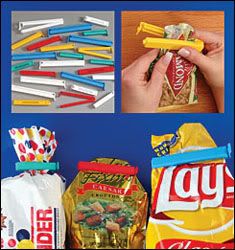
2. Popsicle Stick Clips
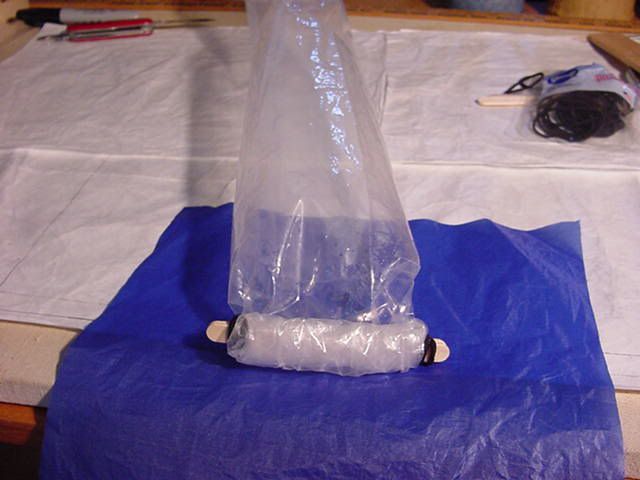
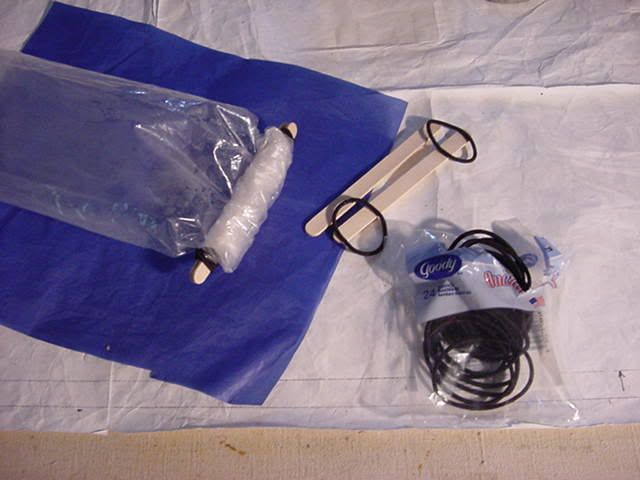
3. Shell for Poly Tubes

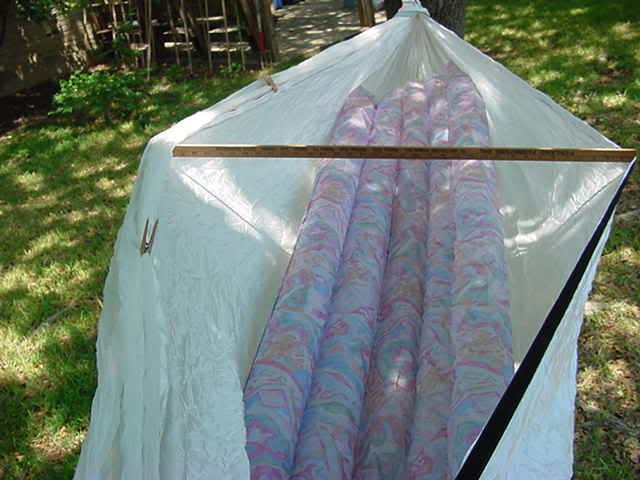
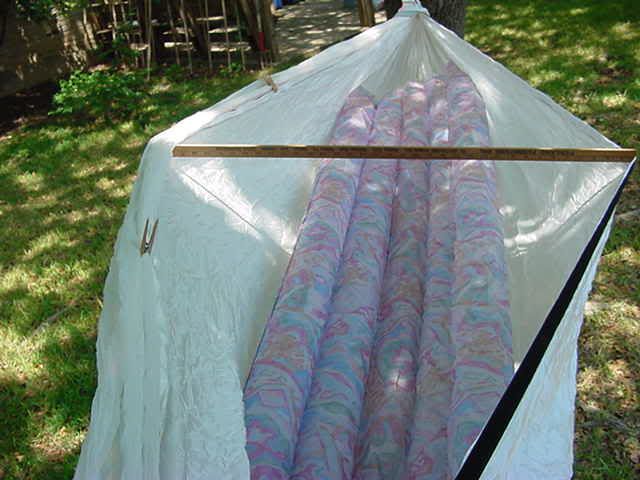
4. Warmlite DAM

5. Making and filling the Silk Tubes with Down.
pg 25

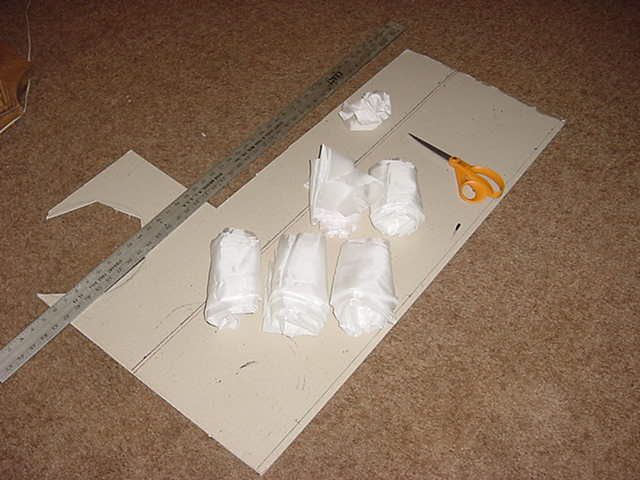
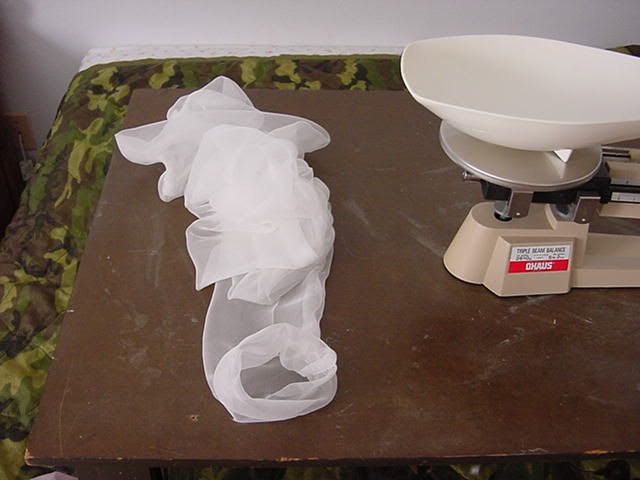
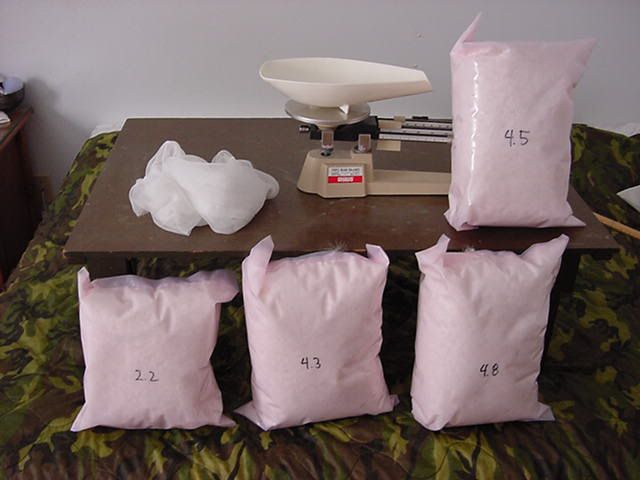
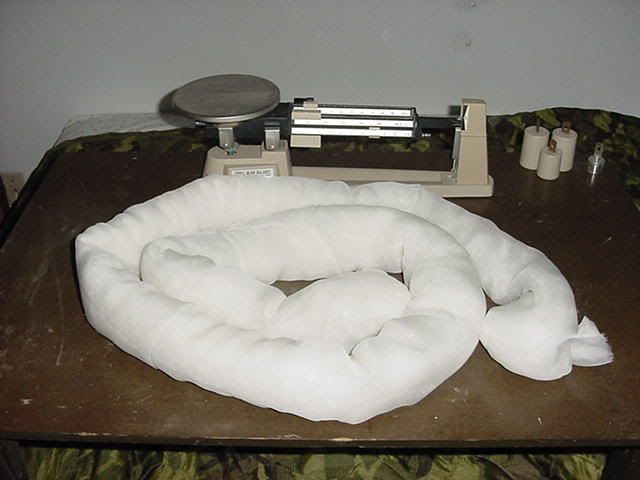
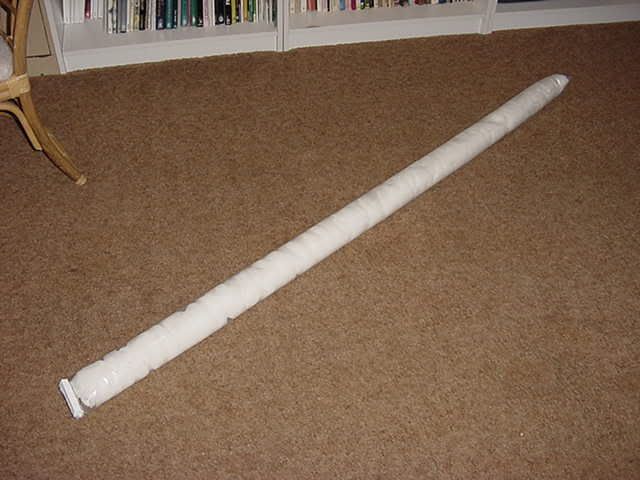
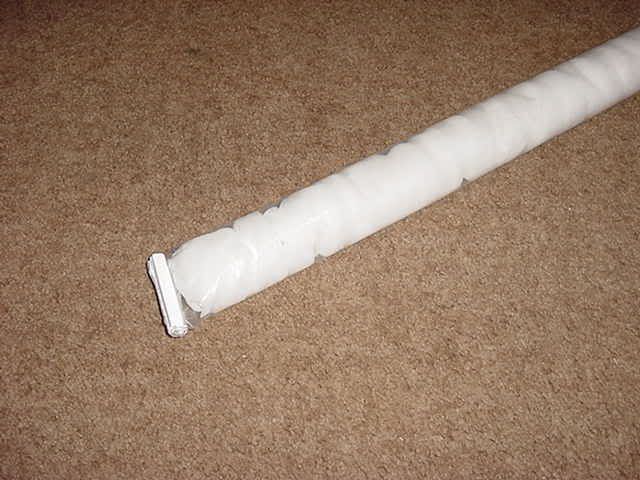
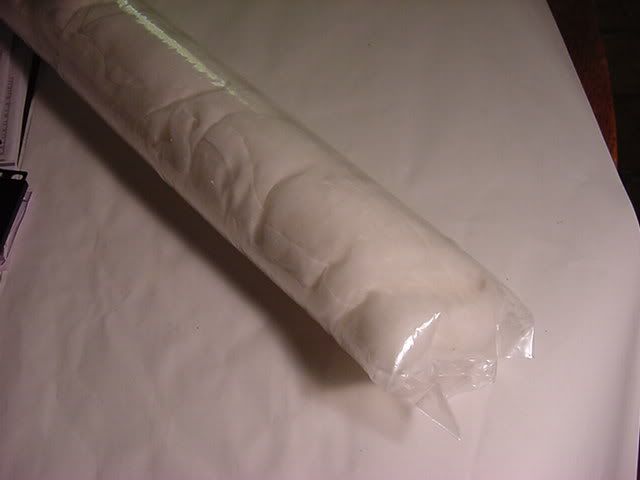

pg 24
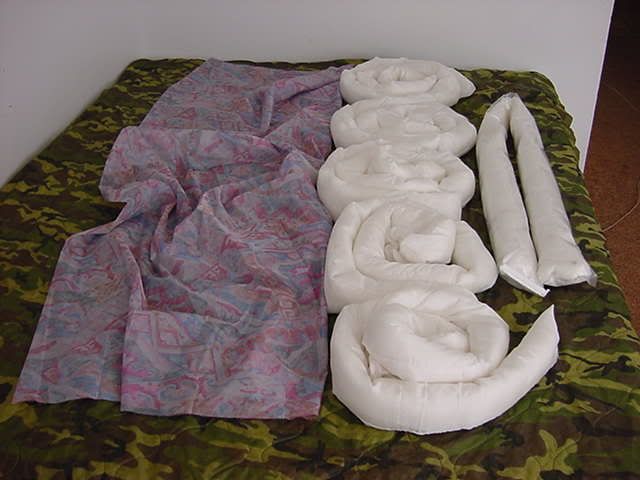
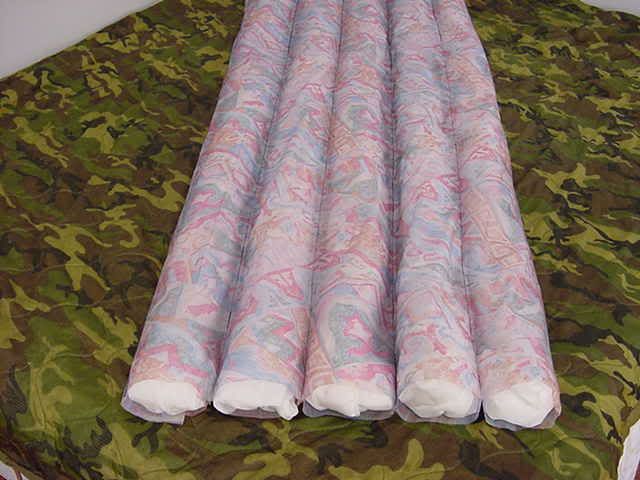
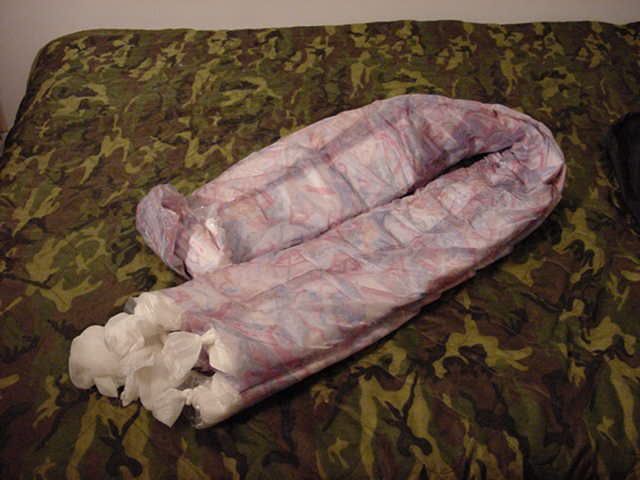
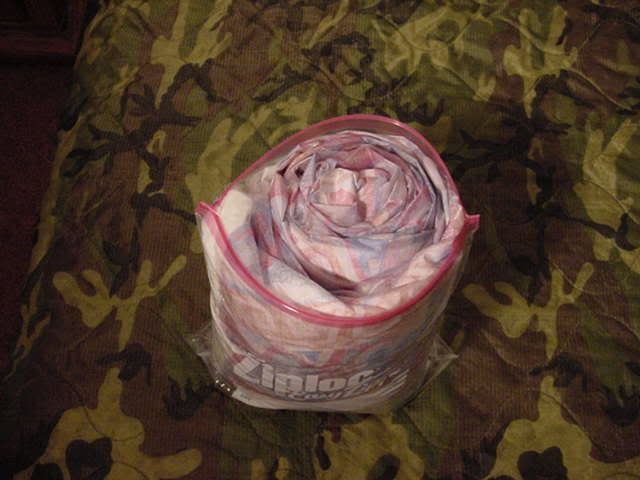
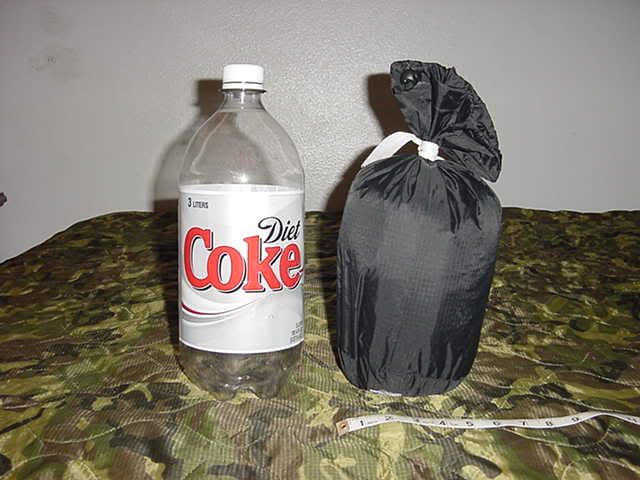
pg 23
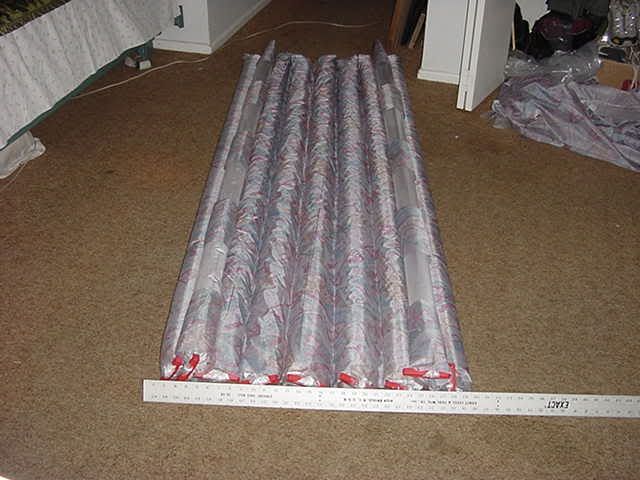
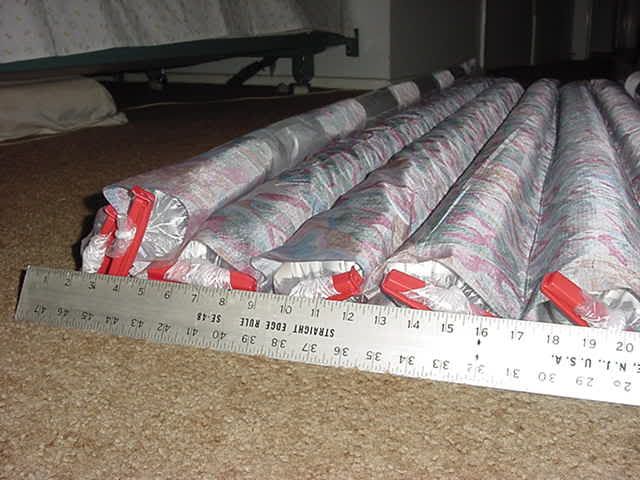

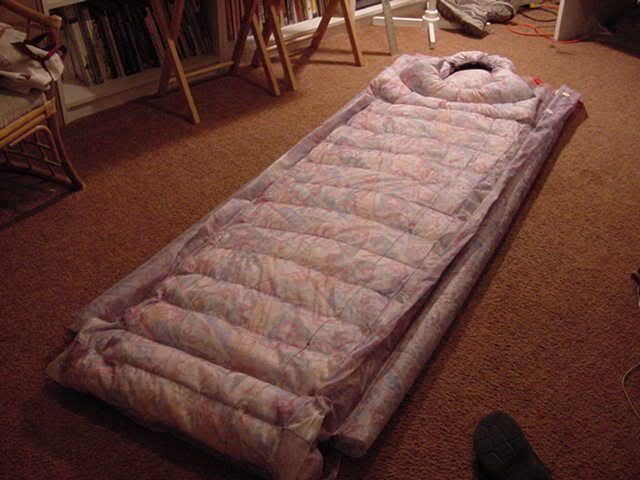
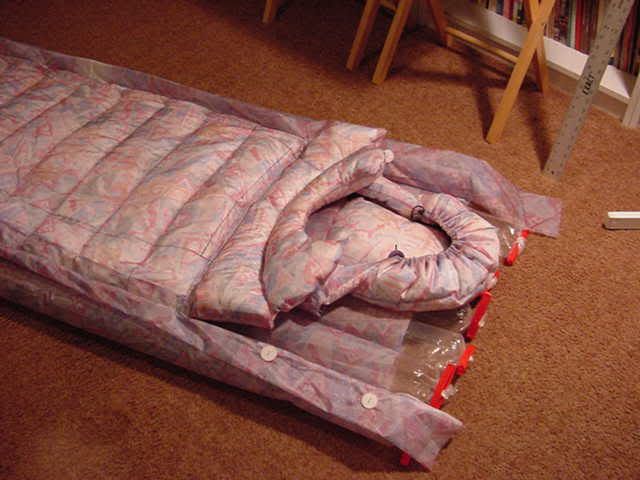

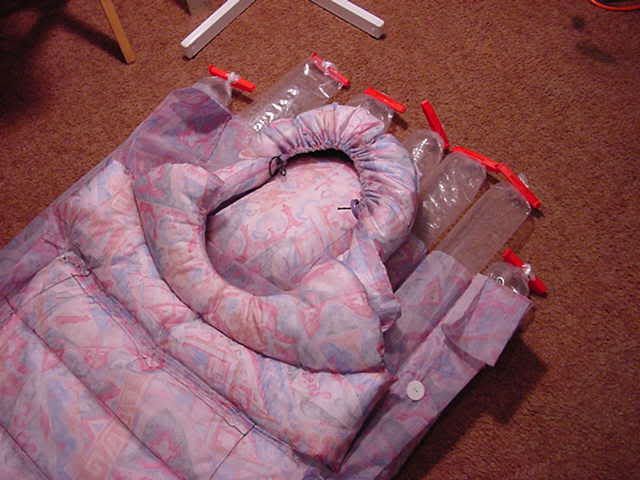
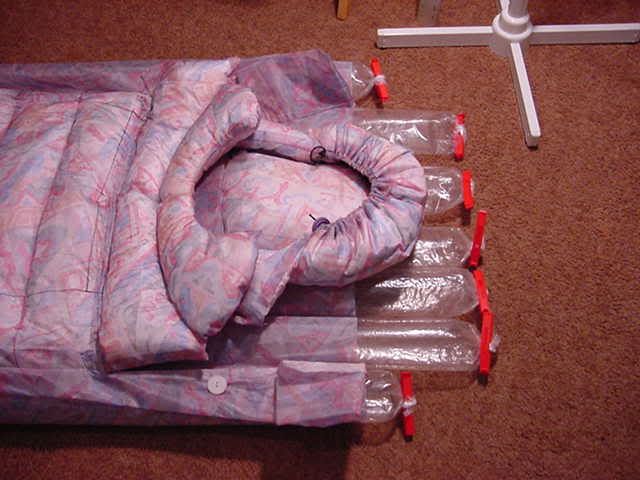
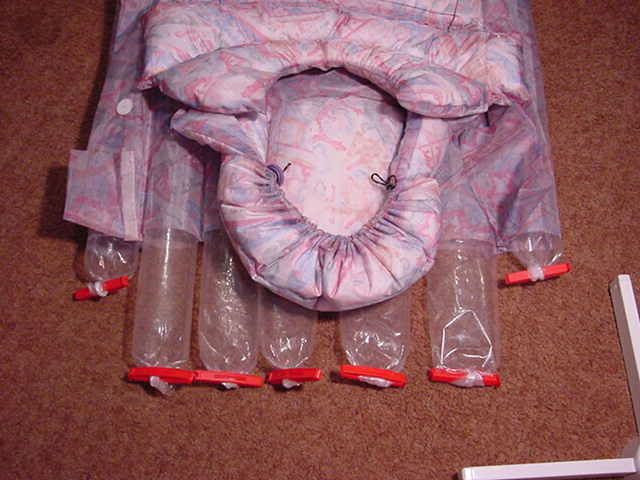
==
Momme
" A Japanese weight equal to 3.75 grams which is applied to a piece of fabric measuring 25 yards by 1,49 inches, an area of 1.035 square yards: thus a 1-momme silk weighs 3.62 grams per square yard." (Howitt). Or, an 8-momme silk would weigh about 1 ounce per square yard. Habutai for example, is woven from 2.5 to 60 momme, with the China Silk class commonly in 8 to 14 momme range. Abbreviated as mm.
* Howitt, F.O. "Bibliography of the Technical Literature on Silk", New York: Hutchinson's Scientific and Technical Publication, 1946. (Discusses research published in magazines articles and books.)
All the above was taken from my copy of the book - "A Silk Workers Notebook" by Cheryl Kolander, Aurora Silk, Portland, Oregon 97217.

3 Comments:
Your approach from CF to novel design architecture is simply unbeatable sensei. Many manufacturers do not go down these avenues since it does not suit mass production or will not let them make as much money for less material which is often new and difficult to work with too. They also have whole strategies around current production lines as well as not being to able to break out of their conceptual boxes. They do not matter.
I also appreciate your altruism to share everything for free where you could have been bought by a manufacturer or at least cheaply by some profiteers for some collective discount scheme. I think your original work and approach will last and will continue to develop beyond our generation and will also be a shining example.
I think we are also beyond UL & SUL label fads as well as 'backpacking'. It applies to a lifestyle which is more common globally as a tradition and is also being revived in the developed world. The philosopher Deleuze praised and called it nomadic verses sedimentary (sediment-rivers-recent farming settled phase). This does not mean one has to sell one's house. Your style could be called in general 'Open Source Light Nomadic'.
Well done and thanks for all you selflessly share.
Hi "who ever",
Thanks for the nice comments.
I am almost 68 so I grew up in a time when sharing information by many of those I was around was done freely and by folks who were not to worried about getting their ideas ripped off. There will always be those who didn't take the time to think out solutions to things. They might be able to make their copy look like the original but they almost always leave out something.
I post what I make to show others that making some of their own gear or other things we use in our lives is not all that hard.
I like your term "Open Source Light Nomadic". Almost sounds like something a person that works a lot with computers might have come up with. I am sure I will use that term in the future but will credit it to an "anonymous source".
Bill, I have been working on a Cuben air mattress design over in the MYOG forum at BPL, you are a true inspiration in this respect. I am wondering if you would have any comments or if you might take a look. My current prototype is using a 3m 9485 pc tape adhesive and it seems to be doing fairly well. Me and my partners in crime are quite concerned about peel strength however, and I'm wondering if this is why you choose single tubes as opposed to designing from a single piece of material.
Thanks,
Gary
Post a Comment
<< Home